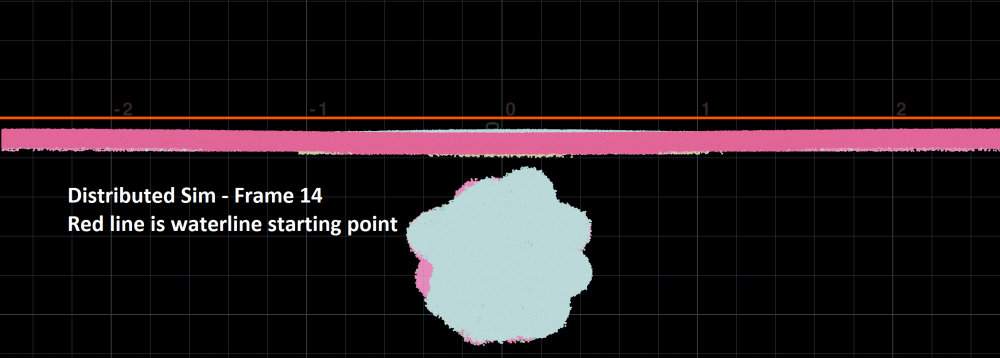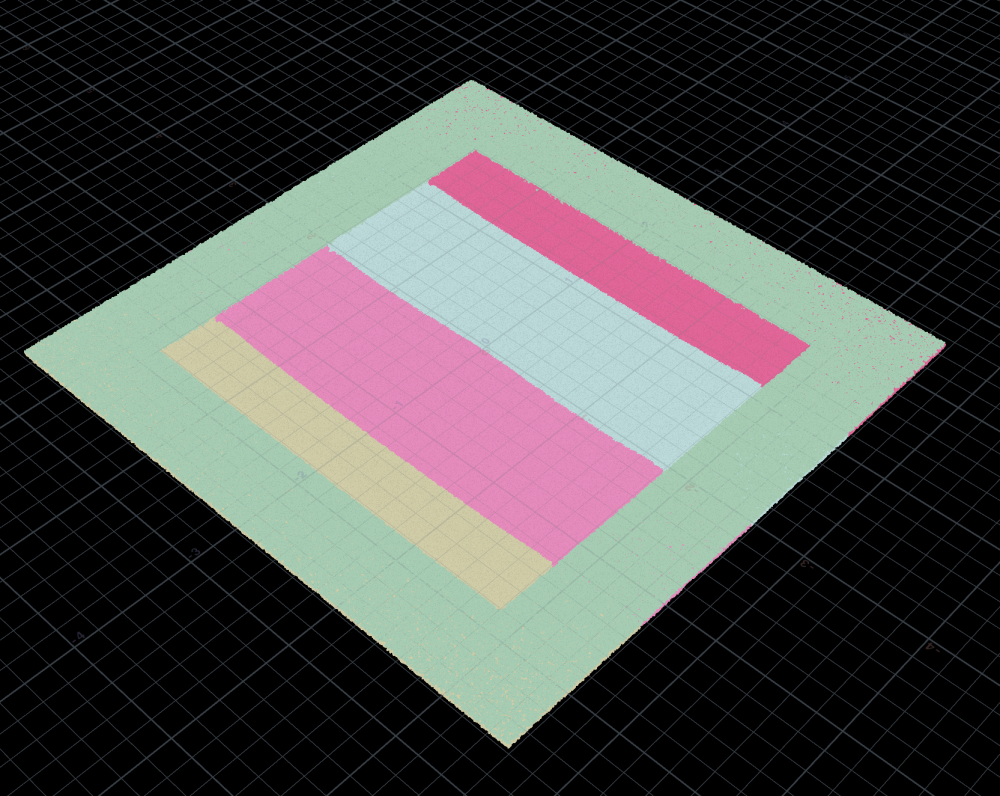Search the Community
Showing results for tags 'volume loss'.
-
It's been hard getting support from the Houdini community on this topic. I'm not sure if the solution to my problem is obvious, or if it's too much of a headache to explain the solution. Either way, this forum is my last hope. I'm trying to simulate a small scale breach—think head coming out of a tub of water. Right now I'm in the RND stage, so I have a simple flat tank setup with a colliding sphere that has an animated mountain noise. Everything is stable when running the sim on a single machine, but when I slice it up and send it to the farm I start to experience volume loss in the tank. I'm assuming it has something to do with the particles being transferred between computers and in turn the attributes become unstable, this is just a guess though. If this is the cause, I wouldn't know how to fix it since my knowledge on distributed sims is limited. The screenshots I've attached show the difference between running the sim on the farm vs a single machine. I only ran the sim to frame 14 in order to get quick results. The actual flip object and solver parameters have not changed between each screenshot, the only difference is whether it's distributed or not. Screenshot 01: Distributed Simulation Screenshot 02: Non Distributed Simulation ALSO, when watching the masterclass on setting up the distributed simulations for FLIP, I noticed that the "Create Boundary Layer" option is manually disabled. I've followed this in my workflow, but technically I need my tank to behave as if it were "infinite", so should I keep this on? Maybe not. Either way I ran a test with it enabled just to see what happens. I don't normally work with tanks when using FLIP so this is a learning experience as well. My results are shown in the screenshot below. You can see that the padding doesn't sink, which makes sense I guess... but the active simulation still sinks. Screenshot 03: Distributed Sim with Boundary Layer enabled Screenshot 04: Distributed Sim with Boundary Later enabled - top view This was probably too much info, but I'm trying to be thorough in order to pin point the issue. I can provide the .hip file as well for those who want it. Any help/insight is appreciated. I'm open to any tips and tricks as well, thanks!
-
Hey I'm currently working on a high res ocean simulation and I am really struggling with a volume loss of the flip simulation over time. I already did a bunch of research, but nothing seems to work so far for me - maybe I did not get everything right in the threads i did read. Here are some things that i tried to work on: - I tried working with the gas equalize volume Microsolver (I calculated my goal volume, but as soon as I started the sim got slower by the factor of 10 and "exploded" after the first Frame) - I tried decreasing the grid size, but to be honest I dont really think thats the issue - the surface looks already really clean with the default resolution - Right no I try to run the sim with "particle separation" activated, but it also gets really slow, and I think there has to be a better way Is that an issue that some of you already faced ? in the attached pictures you can see, how the water level is way underneath the water level, that I would get with the ocean spectrum preview (in the beginning it matches, and over time it gets worse) Would be great if you might help me cheers Felix segelschiff_ocean_sim_V007.hip




